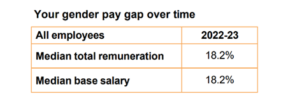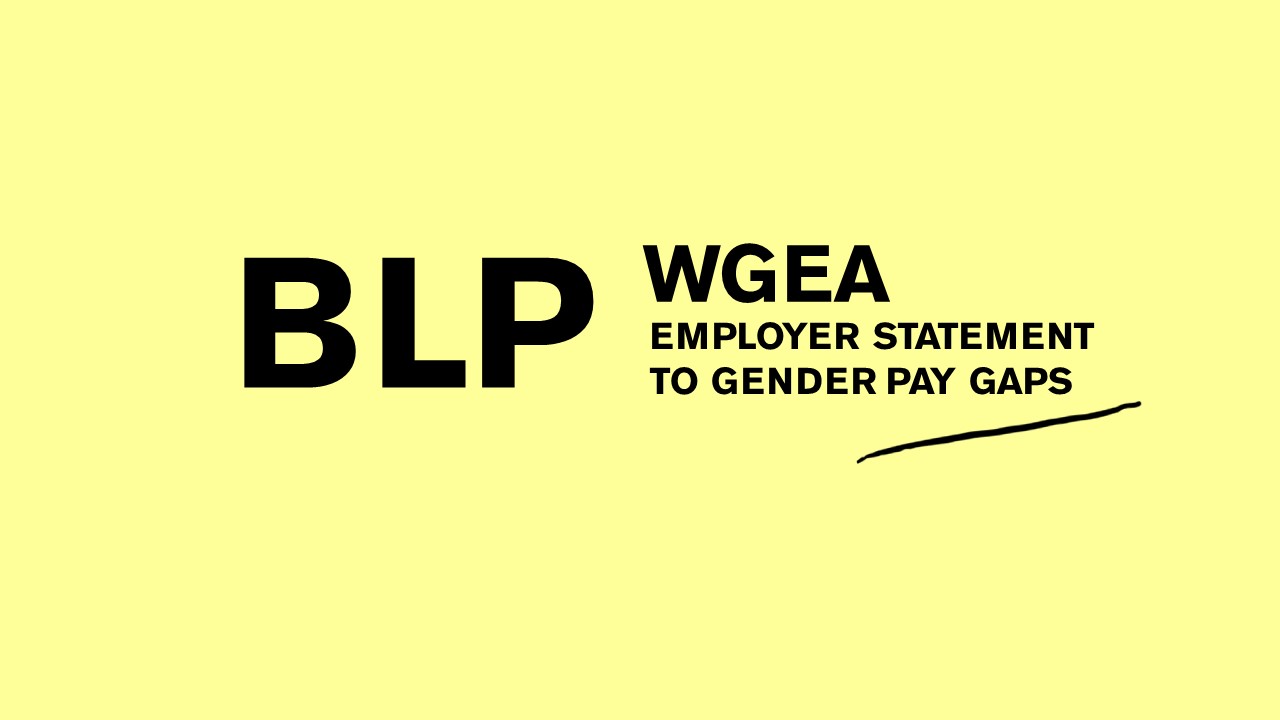Dear BLP’ers,
On Tuesday 27 February, the Workplace Gender Equality Agency (WGEA) will for the first time, publicly release information on gender pay gaps for private sector organisations with 100 employees or more.
BLP support WGEA’s publication of gender pay gaps as part of national efforts to advance gender equality in the workplace.
We wanted to share with you details of our gender pay gaps in advance of WGEA’s release, to help employees understand what this data represents and how we are working to improve BLP’s position. It’s important to note that this data is from 1 April 2022 – 31 March 2023.
Firstly, what is the gender pay gap?
Gender pay gaps are aggregate measures of progress on achieving gender equality at an organisation, sector and national level. The data WGEA is publishing does not cover equal pay for like-for-like or comparable roles within our organisation.
It has been a legal requirement since 1969 to pay equally for the same or similar work regardless of gender. This is tracked and regularly reviewed by the HR team, with necessary salary adjustments made when disparities arise.
Employer gender pay gaps, reflect the overall uneven distribution of compensation in an organisation driven by the fact that women and men are not performing comparable roles or have comparable levels of seniority within organisations – as opposed to not getting paid the same for comparable roles.
Gender pay gaps are driven by a range of organisational, structural, and societal issues and are indicative of long-term and systemic challenges that cannot be fixed with corrective salary adjustments alone. For example, the low representation of women in leadership roles or traditionally male dominated industries can impact a pay gap.
BLP’s gender pay gap from 1 April 2022 to 31 March 2023 is set out below:

While we have made significant progress on improving the overall representation of women in senior leadership positions at BLP, our gender pay gap data shows that we still have work to do. This comes down to two key drivers:
- More than 50% of women in the lower middle and lower quartile
- Less than 50% of women on the Leadership Team (Executive, Principals, Senior Associates & Associates) and Board of Directors
What has BLP done in the last 12 months to close the gender pay gap?
- The recent round of leadership (Principals, Senior Associates & Associates) promotions increased the representation of women on the Leadership Team from 38% to 45%.
- Implemented BLP’s Parental Leave Policy that offers up to 14 weeks of leave at full-pay for both primary and secondary carers along with other industry-leading benefits. The policy has been designed to support equity and flexibility for families, with benefits available to all employees irrespective of their primary or secondary carer role. BLP wants to ensure parents return to work with the same career progression opportunities.
- Last September BLP joined the Champions of Change coalition to focus on shifting the systems of gender inequality within the architectural practice, and to build respectful and inclusive workplaces by engaging leaders and addressing the acute underrepresentation of women in the senior levels of the architecture profession.
What will BLP do in the next 12 months to further close the gender pay gap?
- To continue working towards lowering the gender pay gap through improving the representation of women on the Leadership Team (Principals, Senior Associates & Associates) and Board of Directors.
- Continue working with other architecture practices as part of the Champions of Change coalition to further implement key initiatives and strategies in each practice to advance gender equity in Australia.
- Further develop and publish BLP’s policies to address the issues of the gender pay gaps.
- To continue to support the lower and lower middle quartiles through the annual Career Progression Process by furthering their career development at BLP.


